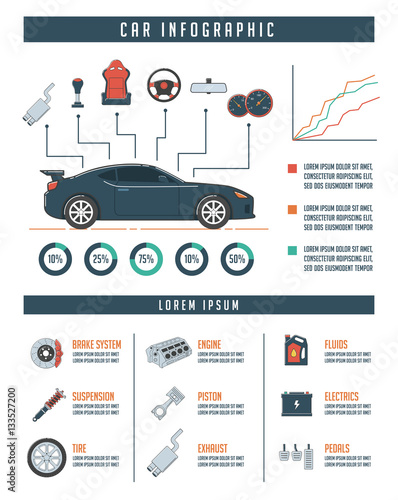Understanding Your Automobile'S Caution Lighting: What Do They Truly Mean?
Understanding Your Automobile'S Caution Lighting: What Do They Truly Mean?
Blog Article
Web Content Create By-Hartley Forbes
When you're behind the wheel, those beautiful caution lights on your dashboard can be a little bit puzzling. Do you know what they're attempting to inform you concerning your auto's health? Recognizing the relevance of these lights is crucial for your safety and security and the long life of your vehicle. So, the next time one of those lights turns up, wouldn't you intend to decipher its message precisely and take the needed actions to resolve it?
Common Warning Lights and Interpretations
Recognize typical warning lights in your vehicle and comprehend their definitions to make certain secure driving.
The most typical warning lights consist of the check engine light, which signifies concerns with the engine or exhausts system. If this light begins, it's critical to have your lorry checked immediately.
The oil stress alerting light suggests reduced oil pressure, calling for instant focus to avoid engine damages.
A blinking battery light may suggest a defective charging system, potentially leaving you stranded otherwise addressed.
The tire stress surveillance system (TPMS) light notifies you to low tire pressure, impacting vehicle stability and gas performance. Ignoring this can cause hazardous driving problems.
The abdominal muscle light indicates a problem with the anti-lock stopping system, jeopardizing your ability to stop promptly in emergency situations.
Finally, the coolant temperature advising light warns of engine overheating, which can result in serious damages if not resolved quickly.
Understanding these common caution lights will aid you deal with concerns quickly and maintain safe driving problems.
Importance of Prompt Focus
Comprehending the typical caution lights in your car is just the very first step; the significance of promptly dealing with these warnings can not be highlighted sufficient to guarantee your safety on the road.
When a caution light illuminates on your dashboard, it's your cars and truck's way of interacting a potential problem that needs interest. Ignoring these warnings can bring about extra extreme problems in the future, endangering your safety and potentially costing you a lot more in repairs.
Prompt interest to alerting lights can stop breakdowns and accidents. For https://techcrunch.com/2022/02/09/mecho-autotech-gets-2-15m-to-expand-vehicle-maintenance-and-repair-services-in-nigeria/ , a flashing check engine light can show a misfire that, if left unattended, might trigger damage to the catalytic converter. Addressing this promptly can conserve you from a costly repair service.
In a similar way, a brake system cautioning light might signal low brake liquid or worn brake pads, vital components for your safety when driving.
DIY Troubleshooting Tips
If you see a caution light on your control panel, there are a few DIY troubleshooting suggestions you can attempt prior to looking for professional assistance.
The very first step is to consult your cars and truck's handbook to understand what the particular warning light indicates. In some cases the issue can be as straightforward as a loosened gas cap causing the check engine light. Tightening up car interior cleaning may fix the issue.
An additional common problem is a reduced battery, which can set off different cautioning lights. Examining the battery connections for corrosion and ensuring they're safe may fix the issue.
If a warning light persists, you can try resetting it by detaching the auto's battery for a few mins and afterwards reconnecting it. Additionally, checking your vehicle's fluid degrees, such as oil, coolant, and brake liquid, can aid repair warning lights connected to these systems.
Final thought
To conclude, comprehending your auto's warning lights is crucial for maintaining your vehicle running smoothly and securely. By promptly addressing these alerts and understanding what they suggest, you can prevent expensive repair work and potential breakdowns.
Bear in mind to consult your car's handbook for specific information on each warning light and act as necessary to guarantee a hassle-free driving experience.
Keep informed, remain secure on the road!
